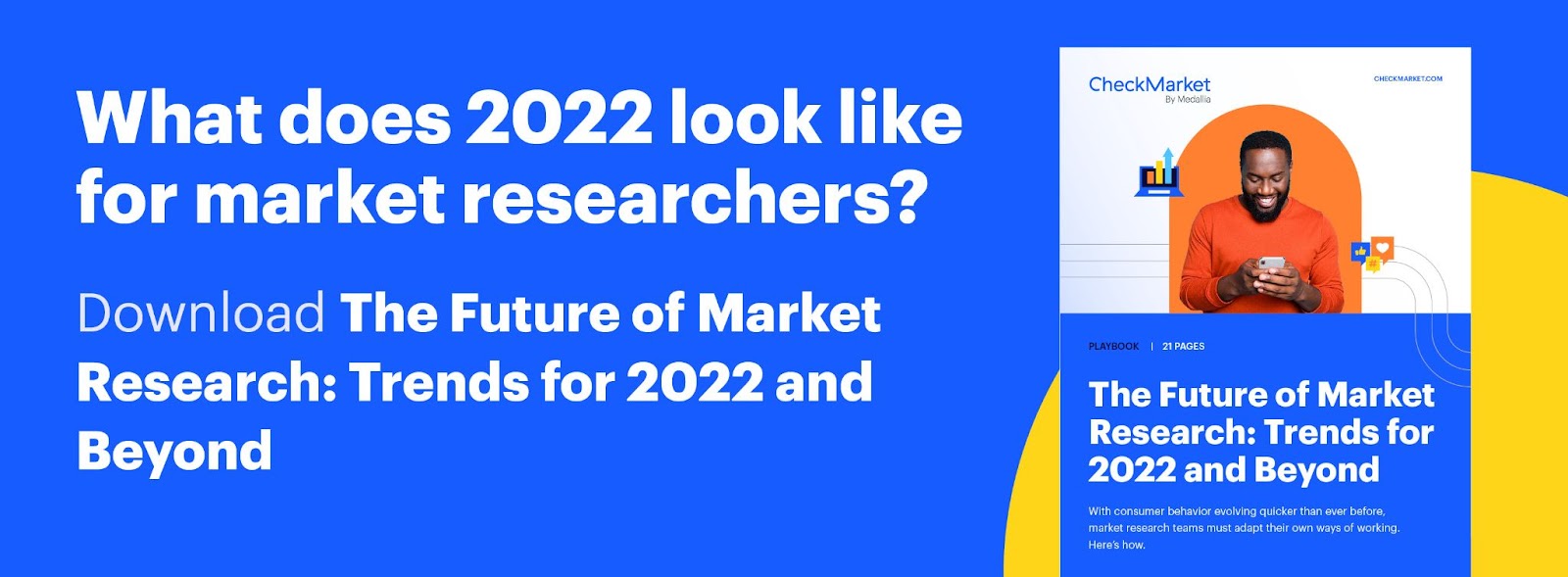Market research is changing as we know it. Qualitative research, while acknowledged by researchers and companies as a useful way to extract rich insights, was also known for its many limitations–including its lack of scalability. Collecting qualitative data used to be a long, complex and non-automatable process that required a lot of manual effort. But recent technological advancements have changed all that, with a boost from the pandemic.
Spurred by lockdowns and the shift to remote research, there has been greater interest and demand for new technologies that allow researchers to remotely collect in-depth face-to-face data. This includes video research. In this article, we’ll provide you an introduction to what it is, its benefits, and the reasons why you should explore it.
How do video insights work?
Video feedback can be captured in various ways. You could arrange an online video interview with relevant participants and record the session—or you can ask them to record a series of videos on their mobile devices, in their own time. In the past, it was usually necessary for companies to hire a camera crew to capture videos of participants at a specified location. At the time, this was considered an expensive and time-consuming ordeal.
Nowadays, video insights have an important place in mixed methods research (also known as hybrid research). Companies can now combine quantitative and qualitative methods more easily than ever before—like by integrating video questions into surveys, for example. This allows for a more complete and robust understanding of your participants.
It’s important to keep in mind that video insights are at their most valuable once you move beyond analyzing the words people say. This is because you have the unique opportunity to also examine how they talk about your brand (their tone, emotions, and sentiments) within the context of their natural environments.

What are the benefits of gathering feedback via video?
Collecting feedback via video has many benefits. From the researcher’s perspective, you get a personal and authentic glimpse into your customers’ lives, which could help you uncover unexpected pieces of information you may not have known otherwise. This is very important for companies that are trying to understand the behaviors and attitudes of people who belong to a specific culture, subculture, or demographic.
Another benefit of video feedback is the rich insights you may extract from it. Like all qualitative methods of market research, video research can reveal a great deal of information about how people think and feel about a certain topic through their body language and expressions. However, it’s especially useful when you need to understand experiences. This applies to all companies in industries that engage in some form of experiential marketing (like retail, foodservice, or hospitality).
Regardless of the industry you’re in, video content helps to bring your customers’ voices to life. It humanizes the data you have about them. You may choose to present a ‘showreel’ of video feedback to other members in your organization, which can help you achieve three things. Firstly, it can increase employee empathy (a key indicator of a successful customer-facing company). Secondly, it helps you combat data denial within your team—after all, showing customers’ faces when they raise issues about your product makes it harder for stakeholders to ignore. But most importantly, it allows you to produce a compelling case for change.
What kinds of research can benefit from video feedback?
Video feedback adds value to many types of market research. It is essential for video ethnography, which involves observing and interpreting how people do relevant activities in their everyday lives. It’s also extremely useful in more specific contexts, such as user testing and marketing effectiveness research.
But that’s not all. Video feedback enhances your focus group and in-depth interview findings—and it complements survey research (which has several applications, such as customer experience surveys, feedback surveys, and employee engagement surveys).
Who uses video research insights?
A growing number of global leading brands have chosen to incorporate video research insights into their market research activities: Samsung, Airbnb, and Toyota, to name a few. One great example of a brand that has leveraged video insights for maximum benefit is American fast-food chain Del Taco. When the company looked for ways to improve their menus, they delivered an engaging interactive survey experience. Customers were asked to play ‘agents’ tasked on a mobile mission, which involved going to a Del Taco restaurant and recording their experience of tasting some test menu items. As a result, the chain received 10 hours of rich feedback, which they used to shape important business decisions.

What does video feedback mean for data privacy?
Video feedback is an invaluable addition to market research, but it’s important to be aware of the implications it has for data privacy. Unlike text survey responses, videos are more likely to contain personally identifiable information, such as participants’ faces and voices. Video is also intimate in nature, as participants may record their responses in private domains such as their homes.
Because of this, companies should always obtain informed consent when conducting video research. Update your privacy policies to make sure you’re as transparent as possible about what kinds of personal data you will actually be processing. If you’re interested in using online tools to aid your research, choosing a GDPR-compliant platform will help you keep data secure (whether your company is based in the EU or not). Similar regulations to be aware of in the US include COPPA and HIPAA.
Video feedback: now available in CheckMarket
We’re delighted to announce that CheckMarket is now integrated with LivingLens, Medallia’s GDPR-compliant video intelligence platform that lets you capture, analyze, and share video insights at scale. No more listening to hours of recordings—this AI-powered tool automatically extracts and categorises meaningful data (such as words, emotions, objects, and sentiments), so you don’t have to. To see this feature in action, simply add a new Video Question Type to your CheckMarket surveys.
Key takeaways
- Video insights are becoming increasingly popular as more companies explore mixed methods research (i.e. using qualitative data to enhance existing quantitative data).
- Video can be used as a primary research method for ethnography, but it can also supplement findings gathered from surveys, focus groups, in-depth interviews, and more.
- Video feedback offers three key benefits to market researchers: it’s authentic, it offers rich insights, and it helps you create compelling and impactful customer stories.
- When conducting video research, it’s important that you are compliant with all the data privacy regulations that apply.


Geef een antwoord